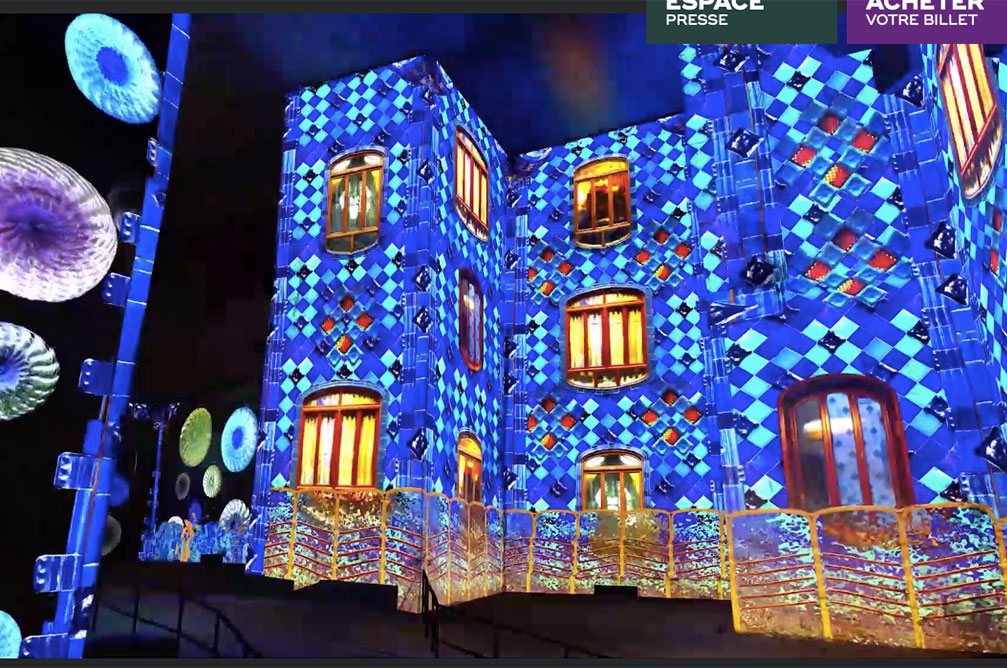The French organization Culturespaces has installations in a number of French cities, although they are all now closed until December 1, 2020 because of Covid concerns. This exhibit, “Gaudí: The Architect of the Imaginary,” is a homage to the Catalonian architect Antoni Gaudí and here shows one of his iconic Barcelona houses, the dynamism of which caused people to take a fresh look at Art Nouveau. Elements from Gaudí’s masterworks, Barcelona’s Park Guëll and Sagrada Familia cathedral, are also explored in the show, which is installed in the Carrière de Lumières, a former quarry in Les Baux-de-Provence in southern France. / © Culturespaces.
GIVEN THE hyperstimulated life we live, it shouldn’t be a surprise that a simple stroll through an art museum isn’t quite enough.
Enter the immersive installation. Sometimes it’s a show dedicated to beloved paintings translated digitally and projected in such a large and commanding way that we can feel we are stepping into them. Then there are the installations that are high-tech, kinetic light shows, such as the ones devised by the American firm Artechouse, with exhibit spaces in New York, Washington DC and Miami Beach. Its current triumvirate of shows, called Submerges by the creators, explore the Earth, the Sky and the Oceans, and all celebrate Classic Blue, the Pantone Color of the Year for 2020. (Blue promises peace and tranquility, which the Artechouse folks acknowledge we could all use round about now, assuming we’re willing to fork out $24 for admission.)
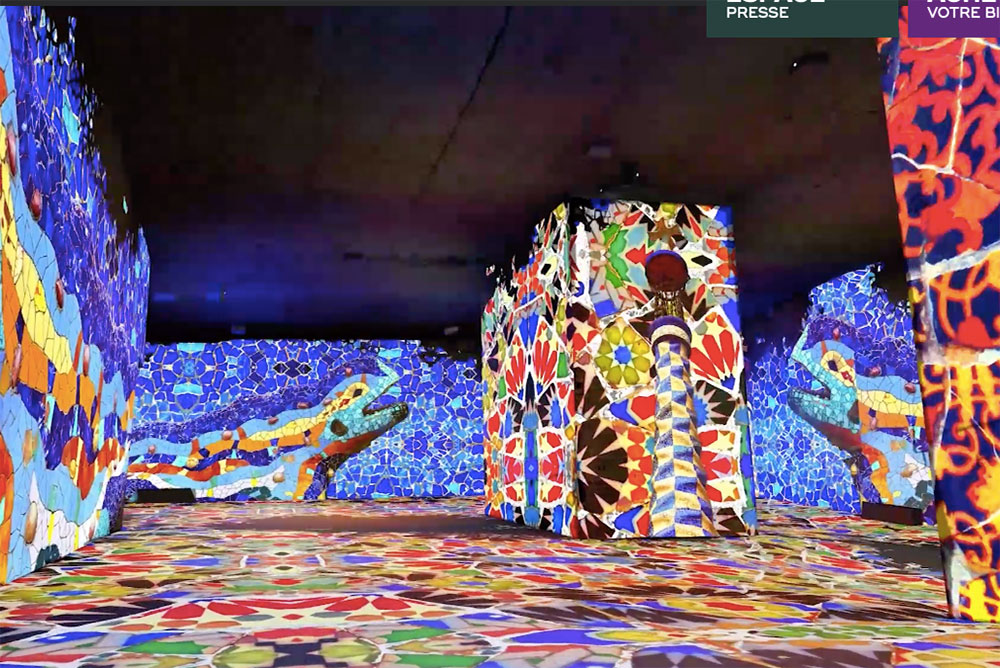
These playful images are plucked from the imaginative Park Guëll in Barcelona, one of architect Antoni Gaudí’s masterworks and part of the view from his house. This is part of “Gaudí: The Architect of the Imaginary,” an immersive art show by the French organization Culturespaces, installed (but currently closed) at the Carrières de Lumières venue in Les Baux-de-Provence, in southern France. / © Culturespaces.
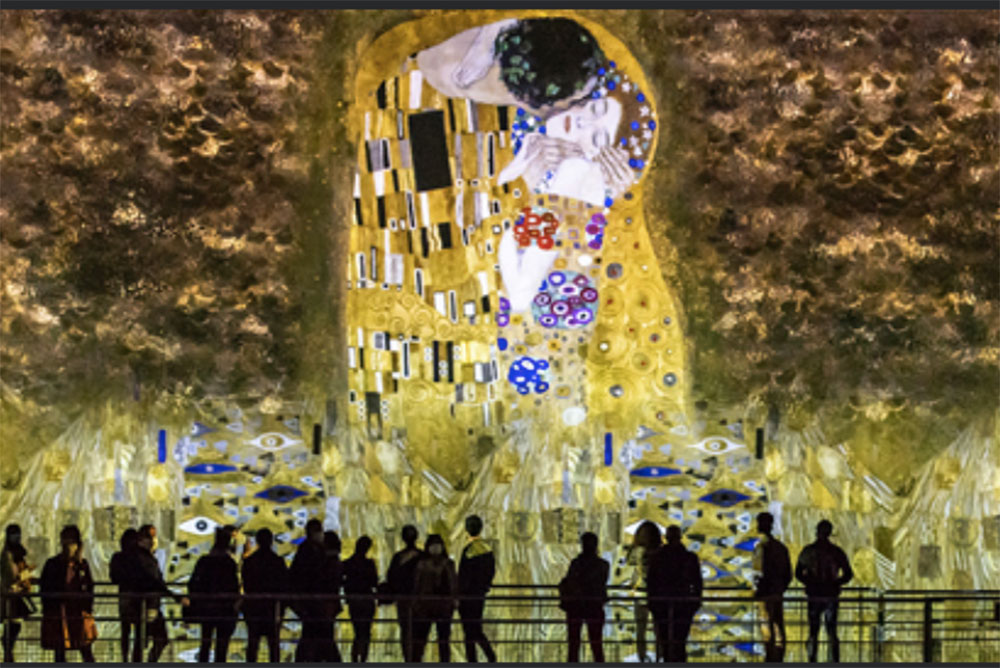
Klimt’s world-famous “The Kiss” from 1907-08 loomed digitally over exhibit-goers in this 2014 installation by Culturespaces, the French museum foundation. / © Culturespaces.
In France, Culturespaces, a museum foundation, has recaptured unused or little used spaces—an abandoned quarry here, an old foundry there—and has reimagined them as art spaces. These are the exhibits of the “real art” variety, wherein paintings and motifs projected on walls dwarf the visitors and surround them with color.
(Here’s where it helps to use extremely well-known images. The Chagall installation I visited in the South of France in 2016 featured the artist’s dream-like images arriving and disappearing, floating around overhead, with no explanatory material, no reference points. To make things more confusing, there was an adjacent “secondary” exhibit of images from “Alice in Wonderland” popping in and out, sliding up the wall, then disappearing. True, they both related to dream sequences and presumably the ephemeral nature of same, but printed materials [that could be read in the dark!] might have provided the connections. Nonetheless, the physical reaction to being overwhelmed by art was substantial.)
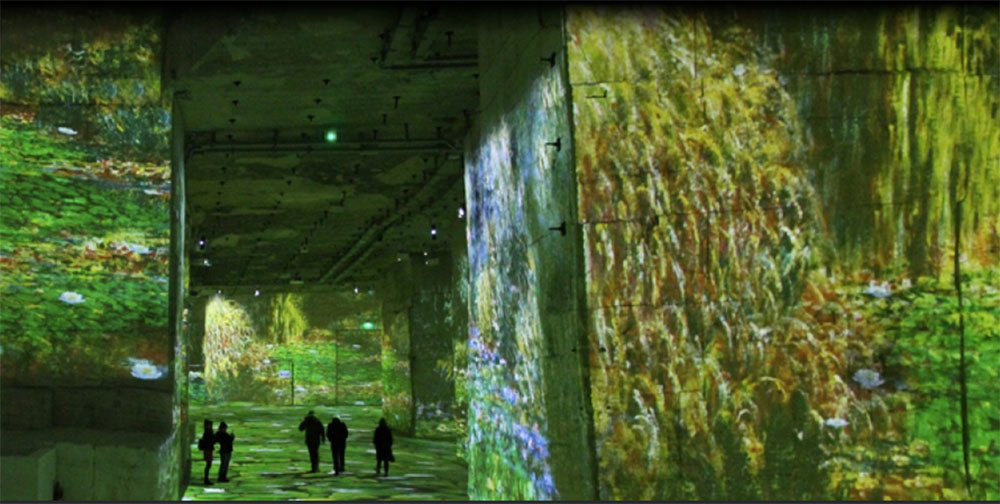
Being inside Claude Monet’s waterlily pond is one experience this previous installation by Culturespaces offered. / © Culturespaces.
“Regular” museums have upped the adrenaline too, offering spectacles such as, in 2017, the Hirshhorn Museum’s 50-year retrospective of 91-year-old Japanese artist Yayoi Kusama with six of her “Infinity Mirror” rooms . . . and lots of polka dots. The National Building Museum, also in DC, has had regular crowd-pleasing installations—among others, “Lawn,” “Icebergs” and “The Beach,” featuring a pool filled with thousands of recyclable plastic balls for visitors to flail around in.

The “Celestial” installation in Artechouse’s New York venue allows total immersion in the color Classic Blue, underfoot, overhead and around the rooms. / © Artechouse.
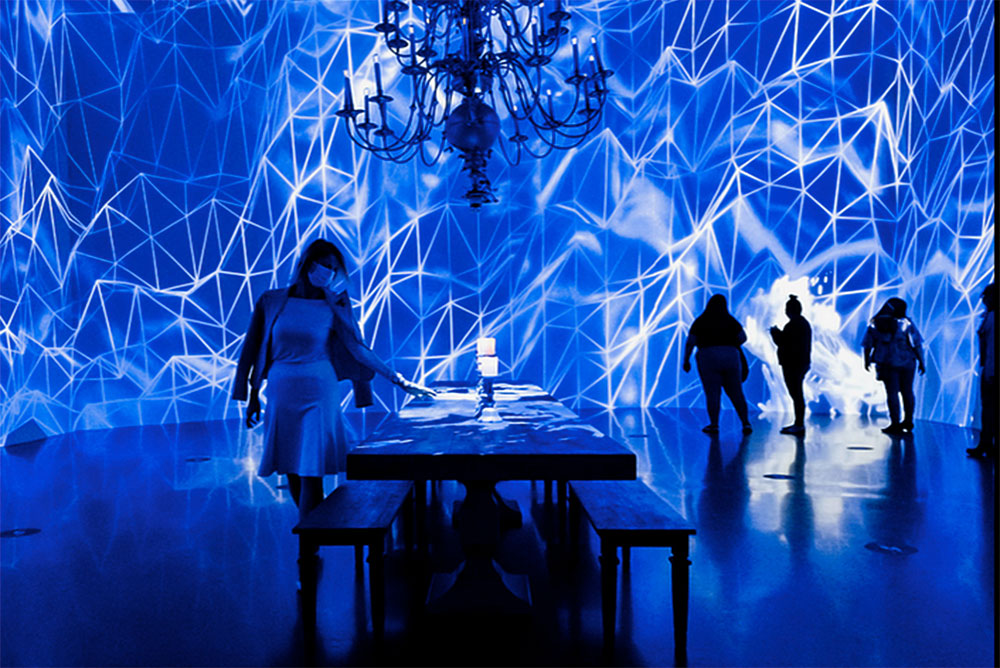
“Cristalline,” an immersive installation by Artechouse in Washington DC. The color, like that of the other current Artechouse installations, is based on the Pantone Color of 2020, Classic Blue. It promises visitors “a sense of peace and tranquility . . . for these turbulent times.” / © Artechouse.
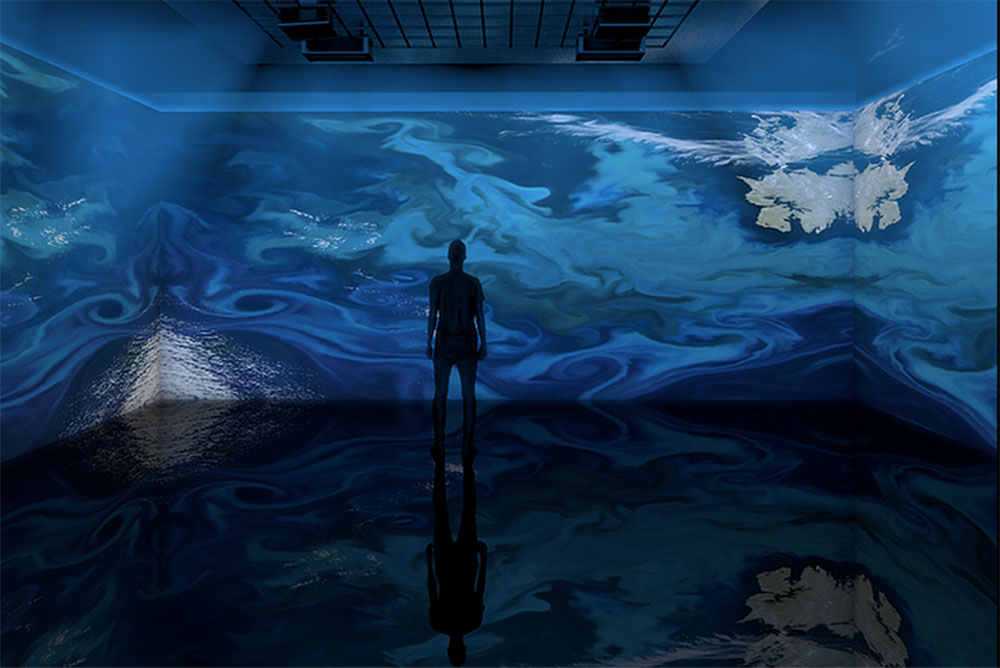
Artechouse’s Miami installation is “Aqueous,” exploring water as a source of serenity. It takes its cue from the Pantone Color of 2020, Classic Blue. / © Artechouse.
These don’t seem to be very “serious” approaches to art, but there is an integrity to their execution. And it’s not as though art has always been about serious purpose and scholarship. Over the millennia, it has been variously totemic, boastful, solemn, sacred (as long as the painter’s patrons were depicted down in front), playful, vituperative and, well, lots more adjectives. So add “immersive” to the list.
—Nancy McKeon
Artechouse Miami, “Aqueous,” through April 14, 2021. miami.artechouse.com.
Artechouse New York, “Celestial,” ongoing. artechouse.com.
Artechouse DC, “Cristalline,” through January 3, 2021. dc.artechouse.com.
Culturespaces, exhibits closed because of Covid-19 until December 1, 2020. culturespaces.com.
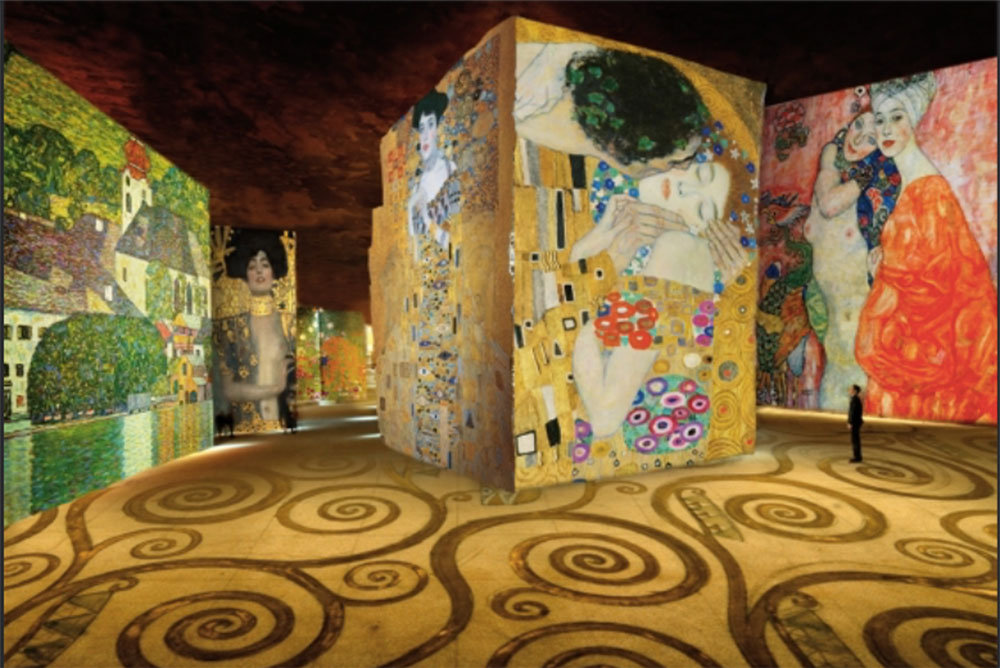
A 2014 Culturespaces exhibit focused on Vienna Secessionist painter Gustav Klimt. The floor motif is from Klimt’s “Tree of Life.” From left rear are “Judith and the Head of Holofernes,” the portrait of Adele Bloch-Bauer, “The Kiss” and “Two Women Friends.” The exhibit was presented at Culturespaces’s Baux-de-Provence venue, a former quarry, the Carrières de Lumières. / © Culturespaces.

